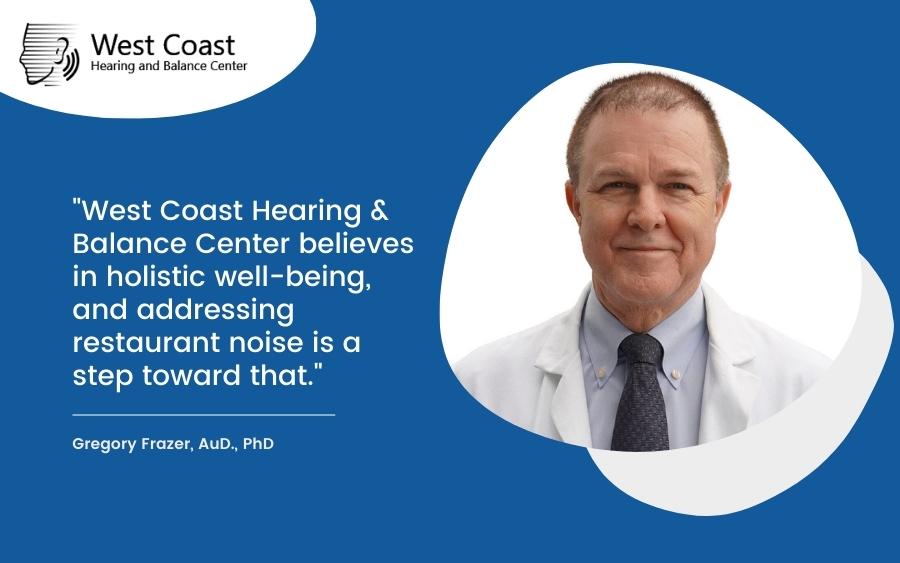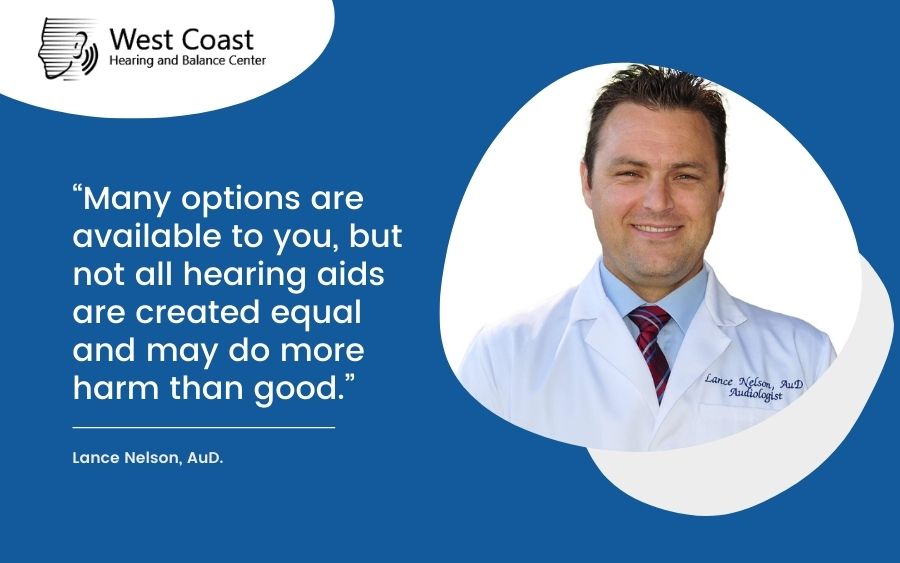The vibrant ambiance of a restaurant is a combination of chatter, clinking cutlery, the buzz of the kitchen, and, occasionally, ambient music. However, when these sounds culminate in a cacophony, it can negatively impact the dining experience, especially for older adults.
At West Coast Hearing & Balance Center, we want to highlight the importance of optimizing the acoustic environment in restaurants. This not only enhances the overall dining experience but also caters to those with hearing difficulties.
The Dilemma of Noise for Older Adults
Recent research elucidated the challenges faced by adults over 60 due to loud background noise in restaurants.
This study demonstrated that the Lombard effect, where individuals unconsciously raise their voice in noisy environments, results in a self-perpetuating cycle of noise in public dining areas.
Consequently, as patrons unintentionally raise their voices to be heard, they inadvertently contribute to the background noise.
Such a scenario not only disrupts communication but also reduces the willingness to revisit the restaurant. With our aging population, it becomes crucial for establishments to address this.
Understanding the Optimal Noise Level
Researchers recommend a background noise level between 50 dB(A)-55 dB(A) for inclusivity, ensuring that even older adults with hearing challenges can comfortably converse. Achieving this benchmark can be challenging, given the multiple sources of noise in a restaurant. However, there are feasible solutions.
Strategies for Effective Noise Reduction
- Acoustical Capacity: Just as there are limitations on the number of patrons due to space constraints, consider an acoustical capacity. It means limiting the number of patrons based on the permissible noise level. While this might seem counterintuitive for maximizing business, prioritizing a superior dining experience can foster customer loyalty and repeat visits.
- Utilizing Absorbent Materials: An effective and aesthetically pleasing approach involves incorporating absorbent materials, particularly in ceiling areas. Suspended acoustic ceiling baffles are proven tools to mitigate disruptive noise. By scattering sound waves, they enhance the clarity of conversations, allowing diners to engage without straining their voices.
- Installation of Screens: Screens or partitions between tables serve dual purposes. Introduced widely during the COVID-19 pandemic to ensure social distancing, they also have acoustical benefits. Screens facilitate spatial energy decay, which in layman’s terms means they help in reducing the spread of noise, ensuring conversations remain private and do not contribute to overall background noise.
Consultation: The First Step Forward
Before embarking on renovations or acoustic adjustments, restaurants should consider consulting acoustic experts. While a proper sound treatment might add to the initial investment (around 5%-10% of renovation costs), the returns in terms of customer satisfaction and loyalty can be significant.
Prioritizing Health and Experience
It’s no surprise that top-tier dining establishments, including some Michelin-starred restaurants, prioritize their patrons’ acoustic experience. By ensuring that conversations are easily intelligible and the environment is comfortable, they encourage patrons to savor their meals and cherish their time at the restaurant.
The saying “Health is wealth” rings true, especially in the context of dining out. A mindful acoustic environment not only promotes good health by reducing stress and strain but also ensures a wealthy flow of satisfied customers. West Coast Hearing & Balance Center believes in holistic well-being, and addressing restaurant noise is a step toward that.
For any hearing and balance concerns or consultations, reach out to West Coast Hearing & Balance Center at our various locations in Ventura and Los Angeles:
Thousand Oaks location at (805) 379-0824 | Simi Valley location at (805) 583-8698 | Oxnard location at (805) 983-4214 | Camarillo location at (805) 484-5951.





